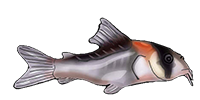- Jun 19, 17:17 by NearlyJen
- May 30, 21:37 by SwevenWonders
- May 08, 06:19 by NearlyJen
- Apr 28, 16:51 by NearlyJen
- Apr 25, 18:54 by NearlyJen
- Apr 25, 18:52 by NearlyJen
- Apr 25, 18:46 by NearlyJen
- Apr 25, 18:46 by NearlyJen
- Apr 25, 18:46 by NearlyJen
- Apr 25, 18:45 by NearlyJen
- Apr 25, 10:03 by NearlyJen
- Apr 23, 12:56 by blani12345
- Apr 20, 16:01 by Luckyloot
- Apr 20, 15:59 by Luckyloot
- Apr 20, 15:56 by Luckyloot
- Apr 20, 15:56 by Luckyloot
- Apr 20, 15:55 Hoplisoma sp. (Cw165) by Luckyloot
- Apr 15, 23:06 by OregonOutdoorsChris
- Apr 15, 23:06 by OregonOutdoorsChris
- Apr 13, 13:41 by NearlyJen
- Apr 13, 13:41 by NearlyJen
- Apr 13, 13:40 by NearlyJen
- Apr 13, 13:40 by NearlyJen
- Apr 13, 13:40 by NearlyJen
- Apr 13, 13:39 by NearlyJen
- Apr 13, 13:39 by NearlyJen
- Apr 08, 06:49 by maxwellgelman
- Mar 29, 21:42 by jcover
- Mar 23, 18:52 by TheMe?
- Mar 23, 18:52 by TheMe?
- Mar 15, 03:59 by MarcW
- Mar 15, 03:41 by MarcW
- Mar 15, 03:38 by MarcW
- Mar 13, 11:29 by Aqua.Limburg
- Mar 12, 19:09 by AC980
- Mar 12, 00:42 by AmazonTank
- Mar 10, 10:39 by Mpulungu
- Mar 10, 04:19 by PileOfRocks
- Mar 04, 04:40 by RobG
- Feb 24, 01:41 by Dalmom721
- Feb 20, 16:53 by Casscats
- Feb 14, 22:22 by huykroma
Browse the full Image, Species, BLog, Aquaria, Wishlist, Spotter or My Cats updates!
Accurate info and multiple images of catfish species. We have 5,160 species, 20,512 images encompassing 56,377 populations in 6,622 registered aquaria. There's 1,828 breeding reports and 4,879 wishlists too. See also the catfish on stamps, habitat, underwater, video collections and all C, CW, L & LDA numbers.
A wide array of hundreds of informative catfish articles. There's something for everyone here, ranging from newbie essentials to specialist topics split across four sections - Species, Reproduction, Geography and 'Catfishology'. Dive in!
/siluriformes/loricariidae/hypoptopoma/sp%281%29/7.jpg) This month's featured species is Hypoptopoma sp. (1). Are you looking for in-depth on a particular species? Then check out the vast CotM Archives.
This month's featured species is Hypoptopoma sp. (1). Are you looking for in-depth on a particular species? Then check out the vast CotM Archives.
 Wild caught or captive bred? by Eric Thomas. The author provides advice for buying new fish you plan to breed and examines how to manage your spawns.
Wild caught or captive bred? by Eric Thomas. The author provides advice for buying new fish you plan to breed and examines how to manage your spawns.
Recent posts in the Forum
Jul 03, 22:35 Adopted Leopard Looking Pleco. L??? by Jackyx in What is my catfish?. 50 views and 2 replies
Jul 03, 19:26 Erethistes horai? No, E. minusculus - SPAWNED! by bekateen in Asian Catfishes. 11093 views and 37 replies
Jul 03, 12:40 Hypancistrus L236 spawn by bekateen in S.A. Catfishes (Loricariidae - Plecos et al). 41814 views and 25 replies
Jul 03, 12:15 My Public Aquarium: exhibit blues - how to make them? by bekateen in Tank Talk. 1704359 views and 1706 replies
Jul 03, 08:28 Help with ID of new catfish by naturalart in What is my catfish?. 99 views and 5 replies
Jul 01, 17:11 What is this tatia looking guy? by bekateen in What is my catfish?. 141 views and 5 replies
Jun 27, 16:23 Is a catfish skin extract the cure for Type-I diabetes mellitus? by bekateen in Taxonomy & Science News. 151 views and 0 replies
Jun 27, 08:01 Non-dissertation student research sticky by bekateen in Taxonomy & Science News. 109762 views and 17 replies
Jun 27, 03:56 My Experience spawning Scobinancistrus Raoni(L82) by Luckyloot in S.A. Catfishes (Callichthyidae - Corys et al). 1055 views and 8 replies
Jun 26, 02:22 Predictions are just that by Shane in Speak Easy. 160 views and 1 reply
Jun 26, 00:45 Pleco advice for a 75g tank by Bettaman in S.A. Catfishes (Loricariidae - Plecos et al). 309 views and 5 replies
Jun 25, 08:58 L071? by Jools in S.A. Catfishes (Loricariidae - Plecos et al). 8334 views and 8 replies
Jun 25, 08:10 My first Microglanis aff. poecilus spawn by Macadelic in S.A. Catfishes (Everything else). 65488 views and 41 replies
Jun 25, 08:06 New Syno? by Macadelic in African Catfishes. 228 views and 5 replies
Jun 25, 06:58 Bagarius protos & Bagarius dolichonema, new species by bekateen in Taxonomy & Science News. 780 views and 5 replies
Jun 24, 19:08 Environmental preferences of Acrochordonichthys rugosus? by bekateen in Asian Catfishes. 153 views and 0 replies
Read curated catfish book reviews and other fishkeeping Book Reviews, written by aquarists for aquarists.
Featuring the relaxing Touch Pools and the Fantasy Catfish page. Buy unique merchandise from our online store. More pages about the webmaster, site map, credits, reviews, trophies and the catfish links page. Subscribe to our Announcement Forum. Learn about how YOU can contribute to the continual improvement of your favourite catfish site!





/siluriformes/callichthyidae/gastrodermus/pauciradiatus/1.jpg)
/siluriformes/loricariidae/hisonotus/aky/1.jpg)
/siluriformes/callichthyidae/brochis(sc3)/bethanae/1.jpg)
/siluriformes/callichthyidae/hoplisoma/cruziense/1.jpg)
/siluriformes/callichthyidae/corydoras/sarareensis/1.jpg)
/siluriformes/callichthyidae/hoplisoma/froehlichi/1.jpg)
/siluriformes/callichthyidae/gastrodermus/gracilis/1.jpg)
/siluriformes/callichthyidae/hoplisoma/knaacki/1.jpg)
/siluriformes/callichthyidae/hoplisoma/sp%28cw028%29/1.jpg)
/siluriformes/callichthyidae/hoplisoma/sp%28cw127%29/1.jpg)
/siluriformes/callichthyidae/hoplisoma/diphyes/1.jpg)
/siluriformes/mochokidae/synodontis/sp%60polli_white%60/1.jpg)
/siluriformes/callichthyidae/hoplisoma/rikbaktsa/1.jpg)
/siluriformes/callichthyidae/hoplisoma/ehrhardti/1.jpg)
/siluriformes/callichthyidae/brochis(sc3)/sp%28cw160%29/1.jpg)
/siluriformes/callichthyidae/osteogaster/hephaestus/1.jpg)
/siluriformes/callichthyidae/megalechis/picta/1.jpg)
/siluriformes/callichthyidae/megalechis/thoracata/1.jpg)
/siluriformes/callichthyidae/gastrodermus/elegans/1.jpg)
/siluriformes/callichthyidae/hoplisoma/caudimaculatum/1.jpg)
/siluriformes/callichthyidae/hoplisoma/parallelum/1.jpg)
/siluriformes/callichthyidae/hoplisoma/concolor/1.jpg)
/siluriformes/callichthyidae/hoplisoma/sp%28cw111%29/1.jpg)
/siluriformes/callichthyidae/gastrodermus/nanus/1.jpg)
/siluriformes/callichthyidae/hoplisoma/gossei/1.jpg)
/siluriformes/loricariidae/hypancistrus/zebra/1.jpg)
/siluriformes/loricariidae/sturisomatichthys/panamensis/1.jpg)
/siluriformes/doradidae/platydoras/armatulus/1.jpg)
/siluriformes/trichomycteridae/trichomycterus/alternatus/1.jpg)
/siluriformes/heptapteridae/leptorhamdia/marmorata/1.jpg)
/siluriformes/bagridae/batasio/fluviatilis/1.jpg)
/siluriformes/callichthyidae/brochis(sc2)/pantanalensis/1.jpg)
/siluriformes/loricariidae/baryancistrus/beggini/1.jpg)
/siluriformes/loricariidae/hisonotus/iota/1.jpg)
/siluriformes/loricariidae/otothyropsis/piribebuy/1.jpg)
/siluriformes/loricariidae/rineloricaria/sp%281%29/1.jpg)
/siluriformes/callichthyidae/aspidoras/velites/1.jpg)
/siluriformes/loricariidae/panaqolus/sp%28l397%29/1.jpg)